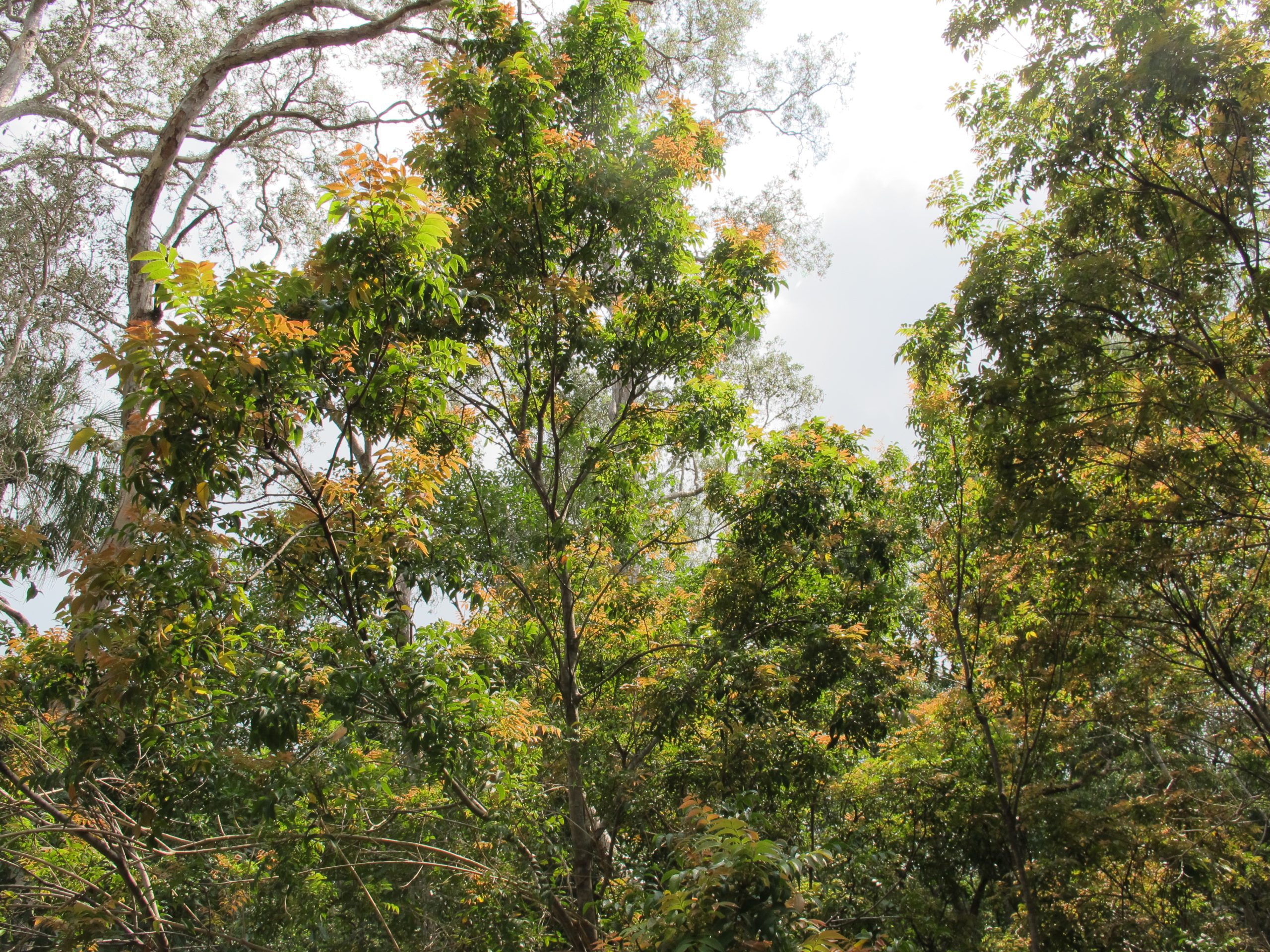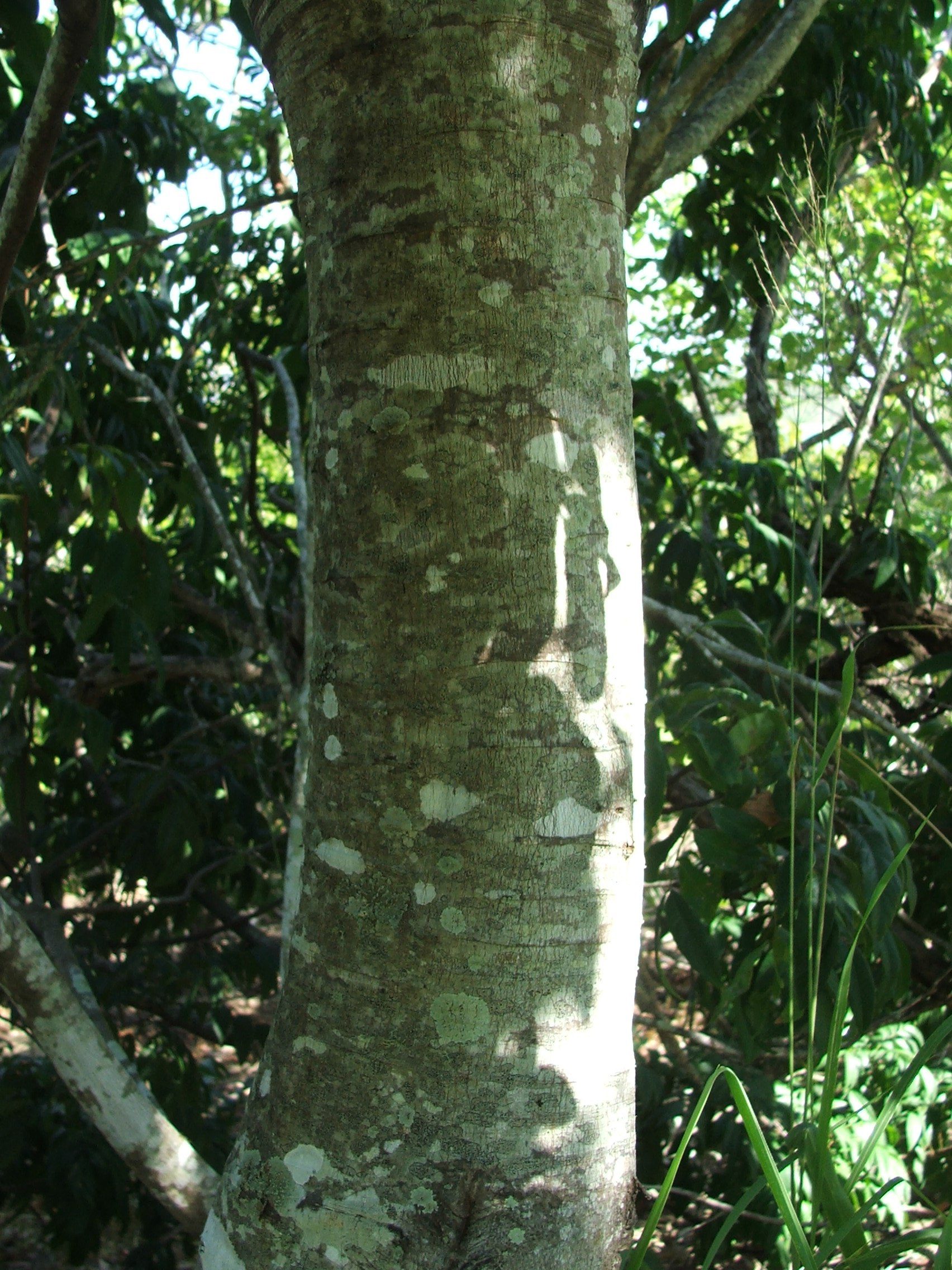Foambark
Jagera pseudorhus, Fam. Sapindaceae




Attractive small tree with a dark grey, smooth bark with raised transverse ridges and a dense canopy of bright green, superficially fern-like leaves that flush pink in new growth. The common name is due to the saponin rich bark that results in foam running down the trunk when it rains.
| Weed Category: | |
| Weed: | No |
| Form or habit: | Small tree |
| Family: | Sapindaceae |
| Leaf: | Alternate, compound leaves with usually around 8 to 20 leaflets. Mature trees have pinnate leaves and no true terminal leaflet while some bipinnate leaves may be found on juveniles. Leaflets are toothed, acute, 2-6cm long, green on both sides and with brown hairs, particularly on the underside. Dense cover of soft, brown hairs on young growth. Has petioles, buds and rachis. |
| Flower conspicuous: | Conspicuous |
| Flower colour: |
Yellow, Red, Brown |
| Flower description: | Dense, terminal panicles, overall yellow brown in colour, although the tiny flowers have red petals. Spring to winter. |
| Fruit conspicuous: | Conspicuous |
| Fruit colour: |
Brown, Yellow, Red |
| Fruit: | |
| Fruit description: | Maroon to yellow brown, more or less ovoid capsules, covered in short, stiff, irritant hairs, split into three segments to reveal one black or dark brown seed per segment. Summer to spring. |
| Habitat: | Littoral rainforest, rainforest. |
| Distribution | Queensland, New South Wales, New Guinea. |
| Food source for: | Fruit, aril and/or seed eaten by the Australian king parrot, figbird, grey and pied butcherbirds, eastern and pale headed rosellas, regent and satin bowerbirds, common koel, crested shrike-tit, noisy miner, olive backed oriole, Lewin's honeyeater and green catbird. |
| Toxicity: | Handle the fruit with care as the hairs can penetrate the skin and may result in skin irritation. |
| Origin: | Australia, New Guinea. |
| Notes: | Grow from fresh seed, seed germinates quickly. Not recommended for backyard plantings because of the irritant hairs on the fruit. Most parts of the tree will produce foam when shaken with water because they contain saponin, the saponin rich bark was used by Aborigines for fish poison and for soap. During World War I, nine tons of bark was collected in Queensland to use in the creation of froth on beer. It has since been shown that blood corpuscles begin to break down at a concentration of one part bark to 14 000 parts water. Timber is tough, fine-grained and very hard, but usually too small to use. |
| Information sources: | Melzer R. & Plumb J. (2007) Plants of Capricornia. |



